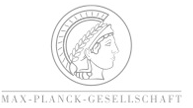
| LOCATION | Edinburgh, NR Scotland |
| MANUSCRIPT | Edinburgh, NR Scotland, GD112/71/2 |
| ITEM No. 3 | Dictionarium verborum iuris proprii Scotiae 'De verborum significatione' |
Dictionarium verborum iuris proprii Scotiae 'De verborum significatione'
Author(s):
- John Skene of Curriehill
Incipit:
- Acton sive attoun is ane kynd [and then:] of armour
Explicit:
- 'Berthinsok'\ vide\
Dictionarium verborum iuris proprii Scotiae 'De verborum significatione' , edited in print in 1597.
While the main language of this text is Scots, it also comprises many text passages in Latin. The scribe was familiar with Latin, but at times he garbled Latin quotations from Jus Commune.
In characterising this work, I relied on observations noted after browsing through the present MS and through another copy of the work, MS Edinburgh, NR Scotland, RH13/59. My observations are, however, marred by a regrettable lack of time. It would be worth while to analyse the work in detail.
The author quotes the treatise Regiam maiestatem and a range of sources from the appendix to it: Quoniam attachiamenta. De judicibus. De maritagiis. Leges burgorum. Leges forestarum. Statutes of kings, up to King James VI. Assyse regis David. Leges Malcolmi MacKenneth. Iter Camerarii. Furthermore the work by Hector Boethius and the sources mentioned therein.
In quoting Scottish sources, the author often refers to particular privately owned volumes of the pertinent text, and to page numbers or folio numbers in them (which make no sense to readers who do not have the pertinent volume at hand. This shows that the extant copies derive directly from the author's original without any adaptation to the needs of a wider public of readers). Examples: in lib. Commiss. fol. 171; liber Commiss. fol. 176 de parvis custumis (in the entry 'Stallangiatores'); in lib. Carn(egie), lib. 1 c. 2; my parchment buik pag. 13 (in the entry 'Pilsouth is ane kynd of sar quhairwith the scheip usis to be inflectit' [{i}= sheeps' illness{/i}]); in lib. Angl., in lib. Purvess (both in the entry 'Zenzell'); Waga est genus mensure, et debet continere duodecim petras: Iter Camer. c. 34, vide supra pag. 230 [{i}the page number obviously refers to the model MS, not to the present copy of it{/i}].
References to Jus Commune:
Corpus juris civilis. Corpus juris canonici. Chassaneus, Consuetudines Burgundiae. Guido Papa, Decisiones Gratianopolitanae. Andreas Alciatus, Parerga. Andreas Alciatus, Liber de singulari certamine (fol. 124v). Carolus Molinaeus, Stilus curiae Parlamenti. Gabriel Paleotus in his buik De nothis spuriisque filiis. Bartolus de Saxoferrato. Bartholomaeus Socinus, Regulae. Baldus de Ubaldis, Consilia. Udalricus Zasius, De feudis. Boerius, Decisiones Burdegalenses. Matthaeus de Afflictis, Consuetudines Siciliae. Matthaeus Wesenbeckius, Paratitla. Budaeus, Annotationes in Pandectas. Jacobus Cuiacius, De feudis.
References to other sources outside the Scottish domestic law:
Bible. 'Vide antiquas leges Brittonum'. Normand law. Henrie III, Statutum de Mortoun. in the lawis of Eyngland, anno 51, Henrie. Doctor Thomas Smith, ane learned man, in his buik on the comoune veil of Eyngland. Reference to English 'Awowson' (in the entry 'Advocatio'). Inst. leg. Angliae, fol. 41 pag. 2 (in the entry 'Sokinaria quasi soytinaria ... is callit be the name of succage'). Leges Angliae Hen. 3 anno 51 (in the entry 'Tumbrellum, tormenti genus'). Cart. Mag. an. 9 Hen. 3, c. 13 (in the entry 'Visinetum').
The author had some knowledge of Gaelic. This can be seen, for instance, in the entries 'Clarimakdur', and 'Culzach', fol. 132v: Culzach sumtymes is called ane forth comand borgh, bot more properlie it may be called ane back borgh or cationer ... the replegiation is called 'Culzach', libro 4, si quis in alterius, 29, Quo. attach. c. 3, Mod. ten. cur. c. 12, De judic. c. 28. [{i}Furthermore see fol. 132r, entry 'Colpinduch':{/i}] Ane zoung beast ... It is ane Irish word, properlie signifies ane fute follover. [{i}Furthermore see entry 'tossederanth'{/i}].
The author refers to a 'Register'. This may either mean (Balfour's) 'Registrum Scotiae', or it may directly refer to the registers of the College of Justice. Most probably the author also used the time's extant collections of judicial precedents. Examples:
1500/11/12 'in the Register', Lord Ruthven contrair Copmalyndi [{i}entry 'Placitum de barrons'{/i}].
1501/1/18 John Stevart contrair William Blair [{i}entry 'Annuell'{/i}].
1503/8/25 'as in the Register' [{i}entry 'Recognist', no parties' names{/i}].
1505/6/12 'in the Reg.', Issobell S(c)ott contra Symoun Moffett.
1510/3/10 'as in the Reg.'.
1541/12/10 David Dennysoun contra the Laird of (Ungi)chton [{i}entry 'Previlege of the tabill'; corresponds to Sinclair's Practicks nr. 38{/i}].
1541/2/15 Viccar of Kinghorne contra the Laird of Seyfeild [{i}in the letter 'P'; corresponds to Sinclair's Practicks nr. 128{/i}].
1542/7/8 'in Registro' [{i}in the letter 'P', no parties' names{/i}].
1542/2/28 Patrick Weymes contra Forbes of Reres {i}'Breve de recto', RH13/59 fol. 127v; corresponds to Sinclair's Practicks nr. 308{/i}].
1547/3/22 William Lyndesay contrair Alexander Chere {i}'Breve de nova dissasina', RH13/59 fol. 127v{/i}].
1555/12/20 Elizabeth Maxwell contra Henry (Dunlop) [{i}entry 'Unto or untill'; not corresponding to Maitland's Practicks{/i}].
1567/11/27 George Haliburton contra the Laird of Haltoun [{i}entry 'Reversioun'; the case is also mentioned in Maitland's Practicks 1567/4/7{/i}]
Author(s): John Skene of Curriehill (editor, probably also author)
No. of pages: Fol. 404r-422v
Rubric: De significatione verborum
Incipit:
- Acton sive attoun is ane kynd of armour for ane manis bodie, to be usit in tyme of weir, the quhilk appeiris to have beine maid.
Attilia sive actilia is callit armour harnessing or.
Atornatus, latine 'actor', that is he that dois ony thing in ane uther manis name and behalf.
Atquiet(u)re in legibus nostris passim usurpatur pro 'citatus' vel 'summonitus ad tertium diem', vide 'adiornamentum' Zenzel of ane castell is the keiping of the castell, 'custodia castri': Leg. burg. c. 3; in lib. Angl.; in lib. Purvess
Explicit:
- Yburpanarseca, vide 'Berthinsok'

